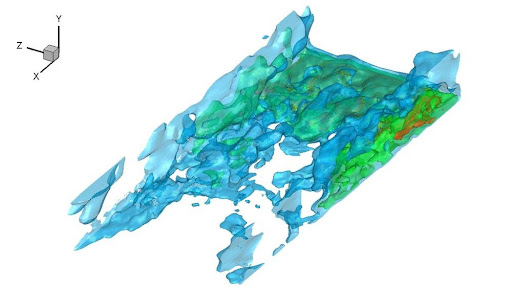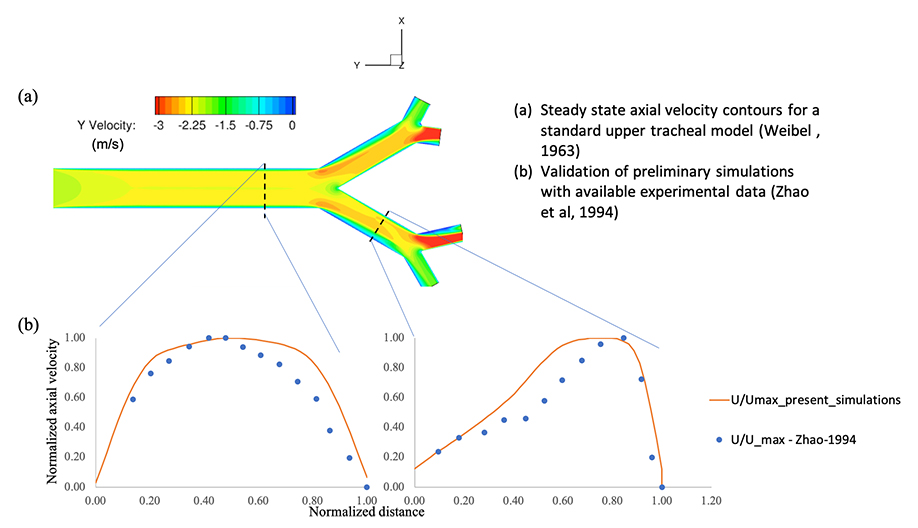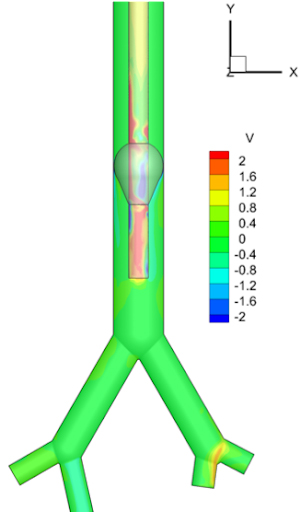A numerical study of the sea surface microlayer
The sea surface microlayer (SML), defined as the top 1-1000 micrometers of the sea surface, is instrumental to the transport of momentum between the ocean and atmosphere. Researchers have attempted to record specific characteristics such as concentration profiles of various chemicals and biological matter variation in the layer but a comprehensive picture of the SML is lacking. Prediction of changes in the SML as a result of changing temperature / atmospheric also prepare for the large-scale effect of the air-sea interactions in coastal areas. On a shorter time scale, the near surface layer (NSL) dictates upper ocean dynamics and the progression of extreme events such as hurricanes and storms. The objective of this study is to carry out high resolution numerical simulations of the SML to isolate specific instability mechanisms responsible for air-sea interactions. While the NSL has been analyzed via field and numerical data, it is notoriously difficult to study the SML owing to large property gradients in the layer and optical issues in resolving the air-sea interface. This study therefore focuses on two phase, transient Large Eddy Simulations of an ocean-air domain to closely resolve the SML and demonstrate corresponding mixing mechanisms.
Related publications
- Sekaran, A., & Amini, N. (2018). A Numerical Study of the Sea Surface Microlayer. Bulletin of the American Physical Society, 63.
- Sekaran, A., & Amini, N. (2019, November). Flow instabilities in the sea-surface microlayer. In APS Division of Fluid Dynamics Meeting Abstracts (pp. S32-004).
- https://tees.tamu.edu/news/2020/02/where-the-sky-meets-the-sea-exploring-the-sea-surface-microlayer.html
Representative grid and boundary conditions of computational domain and preliminary results showing surface interactions

Flow analysis of endotracheal tubes for the prevention of ventilator-associated pneumonia
Respiratory illnesses in the recent past, including COVID-19, have led to an increased use of mechanical ventilators in severely affected patients. Long-term use of these ventilators (over 14-21 days) is linked to mortality rates of up to 50%, owing to the development of secondary infections. Ventilator-associated pneumonia (VAP) is a leading cause of these infections and is primarily caused by the pooling of mucus around the endotracheal tube (ETT) inserted in the upper trachea. Prediction and prevention of the pooling are challenging owing to the complex geometry and non-Newtonian flow interactions, thus requiring constant clinical monitoring of patients. This study aims at providing a prediction of the mucus behavior in intubated patients, via a flow analysis of an intubated upper trachea model. Large eddy simulations incorporating the respiratory cycle and mucus distribution are carried out and the effect of the ETT in mucus leakage is determined. A predictive model for the leakage is developed from this understanding of the primary flow physics in and around the ETT and its relation to patient-driven factors. The model will aid informed selection of the ETT, monitoring when needed, and thus reduced secondary infections in patients and reduced exposure for clinicians.
Related publications
- Sekaran, A. (2020). Flow analysis of endotracheal tubes for the prevention of ventilator-associated pneumonia. In APS Division of Fluid Dynamics Meeting Abstracts (pp. H01-005)

|
|
Contours of normalized streamwise velocity for a conventional ventilator inflow in an intubated trachea |


